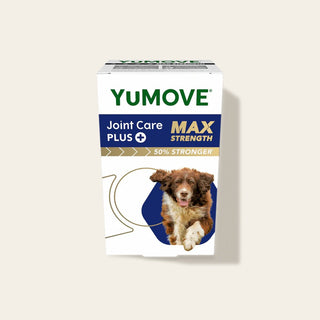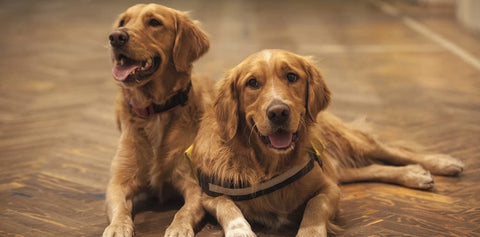

Can I over exercise my dog?
Exercise is key to helping our pets lead healthy, balanced lives and can be a great outlet for dogs. But believe it or not, there is such a thing as too many walks! Over-exercising can impact your dog’s mental and physical health, particularly their joints.
Finding the right balance is different for every dog, so let’s break down the signs of over-exercise in dogs, low-impact exercises you can try and how you can ensure they’re getting the amount they need.
Signs of over-exercise in dogs
While we know our dogs love to zoom around, they can sometimes push it too far. Rigorous exercise can lead to health concerns, including for their joints, so your dog might not enjoy too many daily activities, like long runs or steep hikes. It’s important to understand your dog’s limits…
Identifying whether your pet might be doing too much exercise can be tricky, so here are a few indicators to look out for:
- Exhaustion: your dog may seem excessively tired, more so than usual after a walk.
- Overworked muscles: they might start panting to try to remove excess heat, they might tire towards the end of a walk.
- Joint concerns: if they’re reluctant to go for a walk or have difficulty going up the stairs, they may be experiencing occasional joint stiffness.
- Paw pads: their paw pads may become red, sensitive or sore if overused.
- Behavioural changes: if your dog suddenly changes temperament and becomes more anxious or irritable, it could be a sign that it’s no longer enjoying the level of exercise their doing.
So, how do we ensure our dogs get the right amount of exercise?

How much exercise does a dog need?
The amount of exercise a dog needs can differ depending on several key factors, such as age and breed.
Age
Younger dogs, as we know, tend to have short bursts of lots of energy followed by naps and benefit from smaller amounts of exercise that centre around socialising, like playing in the park or training.
Adult dogs, now fully grown can enjoy frequent exercise with activities they know they enjoy. They’ll also know their own limits but may benefit from additional joint support to help maintain their joint health.
Older dogs may need a gentler type of regular exercise for shorter periods, such as light swimming or short walks. You should also consider giving them a supplement formulated specifically to support senior dogs and discuss this with your vet.
Breed
Your dog’s breed will tell you a lot about how much and how often they should be exercising. Working breeds, like Labradors, Border Collies and German Shepherds, are athletic and may need more intense or frequent workouts than a smaller or flat-faced breed. Giant breeds, such as Great Danes or St. Bernards, also benefit more from low-impact exercise.
To understand more about how much exercise your dog needs, you should speak to your vet. You can also use an our dog exercise calculator.
Low impact exercise for dogs
If you feel your dog may be over-exercising or could benefit from a variety of types of exercise, here are some low-impact exercises your dog may love.
- Swimming
- Flat walks
- Playing fetch
- Training (scent work or learning commands)
The most important thing is understanding their needs and looking for signs they may be pushing it too far with exercise. If you notice they’re more reluctant to go for a walk or have difficulty rising after resting, it’s okay to give them a break, and you should speak to your vet.
Remember to tag us in your photos and videos on Facebook and Instagram to share your dog's favourite exercises with us.




